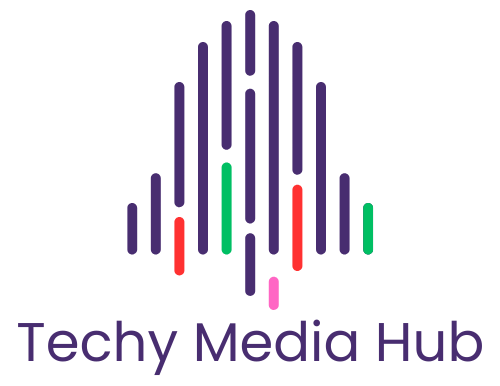
In today’s fast-paced digital world, businesses are increasingly turning to digital marketing to reach their target audiences effectively. Unlike traditional marketing methods, digital marketing leverages online channels to connect with customers, drive sales, and build brand awareness. But what exactly is digital marketing, and how does it work? This article breaks it down, exploring its key components, benefits, and the latest trends shaping the industry.
Understanding Digital Marketing
Digital marketing refers to the use of digital channels, platforms, and technologies to promote products or services. These channels include search engines, social media, email, websites, and mobile apps. The primary goal is to engage potential customers where they spend most of their time online.
Unlike traditional marketing, which relies on mediums such as print, television, and radio, digital marketing allows businesses to personalize their messages, measure performance in real-time, and refine strategies based on data insights.
Key Components of Digital Marketing
Digital marketing consists of several strategies, each serving a unique purpose in engaging audiences and driving conversions. Here are the core components:
1. Search Engine Optimization (SEO)
SEO is the practice of optimizing a website to rank higher in search engine results. The goal is to increase organic (unpaid) traffic by improving website content, structure, and keyword usage. Companies invest in SEO to ensure their brand appears at the top of Google searches when users look for relevant products or services.
2. Content Marketing
Content marketing focuses on creating valuable and informative content to attract and retain customers. This includes blog posts, articles, videos, infographics, and podcasts. Businesses use content marketing to educate their audience, build trust, and drive engagement.
3. Social Media Marketing
Platforms like Facebook, Instagram, Twitter, LinkedIn, and TikTok offer businesses a way to engage with their audience, share content, and promote products. Social media marketing involves paid advertisements, organic posts, influencer collaborations, and community engagement.
4. Email Marketing
Email marketing remains one of the most effective ways to nurture leads and maintain customer relationships. Businesses send personalized emails to inform customers about new products, promotions, and company updates, helping to drive conversions and customer loyalty.
5. Pay-Per-Click (PPC) Advertising
PPC is a model where businesses pay a fee each time their ad is clicked. Platforms like Google Ads and Facebook Ads allow brands to target specific audiences based on demographics, interests, and behaviors. PPC is a fast way to generate traffic and leads.
6. Affiliate Marketing
In affiliate marketing, businesses partner with influencers, bloggers, or third-party websites to promote their products in exchange for a commission on sales. This method expands a brand’s reach through trusted voices in the industry.
7. Mobile Marketing
As mobile usage continues to grow, businesses are optimizing their marketing efforts for smartphones and tablets. Mobile marketing includes SMS campaigns, mobile apps, and location-based promotions to reach consumers on the go.
8. Marketing Analytics and AI
Data-driven marketing has become essential in today’s landscape. Businesses use analytics tools to track performance, measure campaign effectiveness, and optimize strategies. Additionally, artificial intelligence (AI) is playing a growing role in personalizing customer experiences, predicting trends, and automating tasks.
How Digital Marketing Works

Digital marketing operates through a combination of these strategies, creating an interconnected system that guides customers through the buying process.
Here’s how it works in a step-by-step process:
- Awareness: Businesses use SEO, social media, and paid ads to increase brand visibility and attract potential customers.
- Engagement: Content marketing, email newsletters, and social media interactions help keep potential customers interested.
- Conversion: Through compelling calls-to-action (CTAs), businesses persuade users to take action whether it’s making a purchase, signing up for a service, or subscribing to a newsletter.
- Retention: Businesses use email marketing, loyalty programs, and personalized content to maintain long-term customer relationships.
- Analysis & Optimization: Using marketing analytics tools, businesses measure campaign success and make necessary adjustments for continuous improvement.
The Latest Trends in Digital Marketing
Digital marketing is constantly evolving, with new technologies shaping the industry. Some of the latest trends include:
- AI-Powered Marketing: Companies like Yum Brands (owner of Taco Bell and KFC) have adopted AI-driven marketing strategies to improve customer engagement and reduce churn.
- Personalization: Businesses are using data to deliver highly personalized experiences, from targeted ads to customized emails.
- Influencer Marketing Growth: More brands are collaborating with influencers to reach niche audiences and enhance credibility.
- Voice Search Optimization: With the rise of voice assistants like Alexa and Siri, businesses are optimizing content for voice search.
- Privacy-Focused Marketing: As data privacy regulations become stricter, businesses are focusing on ethical and transparent marketing strategies.
Conclusion
Digital marketing is an essential part of modern business, allowing companies to reach their target audience more efficiently than ever before. With a range of tools and strategies available, businesses can craft personalized, data-driven campaigns that drive growth. As technology continues to evolve, staying up-to-date with the latest trends and best practices will be crucial for success in the digital marketing landscape.
